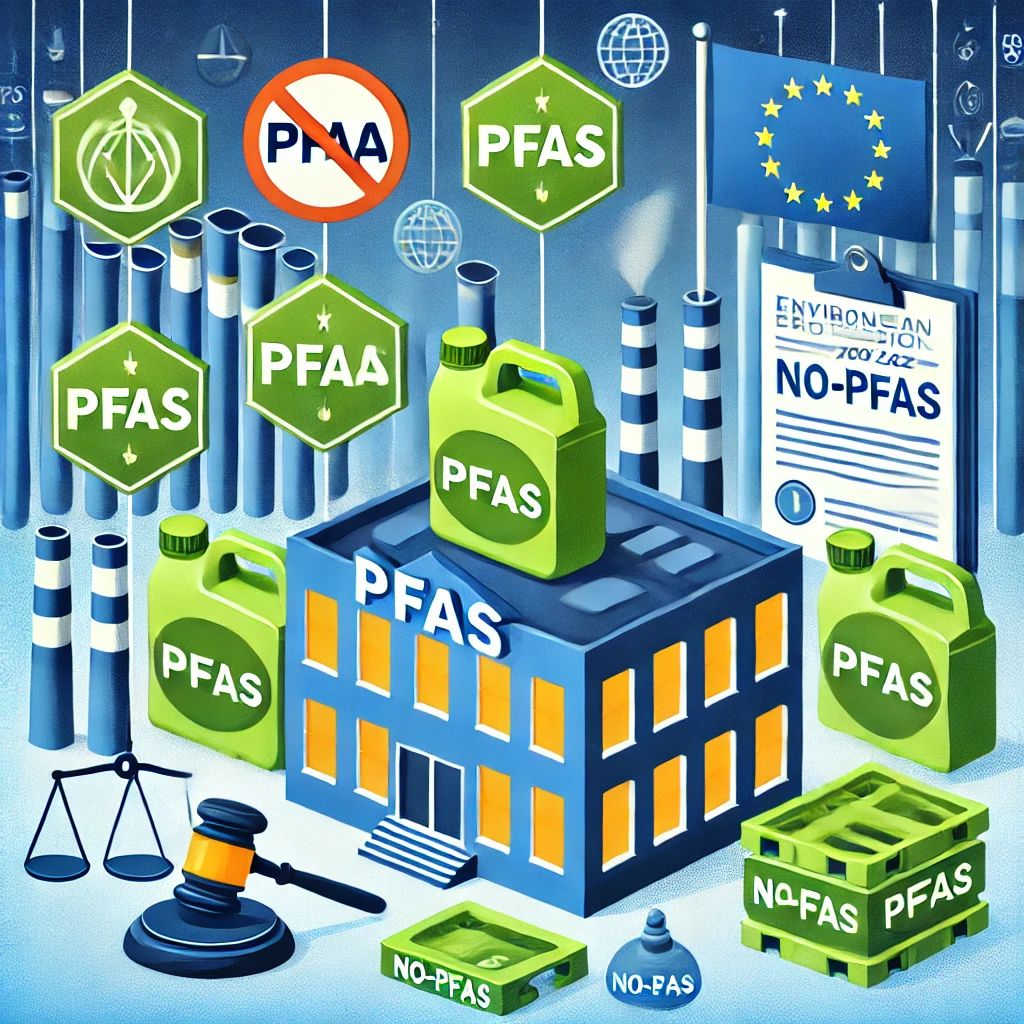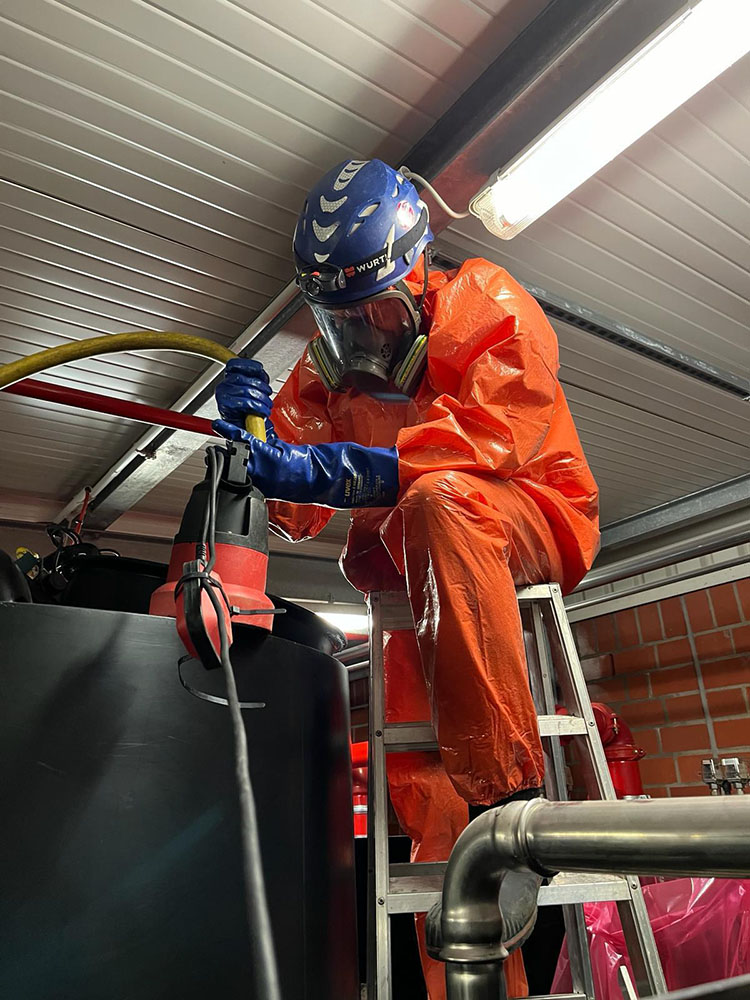On September 19, 2024, the European Commission enacted Regulation (EU) 2024/2462, a pivotal step in restricting the use of per- and polyfluoroalkyl substances (PFAS). This legislation, specifically targeting undecafluorohexanoic acid (PFHxA), its salts, and related compounds, is designed to mitigate the significant risks these chemicals pose to the environment and public health. PFHxA is one of the short-chain PFAS compounds notorious for its extreme persistence, mobility in the environment, and potential long-term health risks. This article explores the key provisions of the new regulation and its implications for industries across Europe.
Why PFAS Regulations Are Critical for Environmental and Health Protection
PFAS are a group of synthetic chemicals used across numerous industries due to their resistance to heat, water, and oil. While useful, they are highly persistent, meaning they do not break down easily in the environment. They can accumulate in the food chain and are associated with serious health issues, including endocrine disruption, cancer, and reproductive harm.
PFHxA, a short-chain PFAS, is particularly problematic due to its high mobility. It easily spreads through soil and water, making it difficult to contain. Studies have found PFHxA residues in both environmental samples and human bloodstreams. Despite being less bioaccumulative than long-chain PFAS (such as PFOA or PFOS), PFHxA’s persistence and environmental reach raise significant concerns, driving the EU to impose stringent restrictions.
Objectives of EU Regulation 2024/2462
The primary goal of this regulation is to limit the use of PFHxA and its related compounds to prevent environmental pollution. It aims to phase out the use of PFHxA in various sectors, ensuring businesses transition to safer alternatives. The regulation aligns with the EU’s broader strategy to reduce the presence of persistent organic pollutants (POPs) in the environment and safeguard public health.
Key Provisions of the PFC PFAS Regulation: What Businesses Need to Know
1. Scope of the Regulation
The regulation applies to all products containing PFHxA, its salts, or related compounds in concentrations exceeding defined thresholds. Affected products include textiles, paper, packaging materials, and especially firefighting foams.
2. Firefighting Foam Restrictions
One of the most significant changes is the outright ban on firefighting foams containing PFHxA or related chemicals. These foams must be replaced with fluorine-free alternatives, which are proven to be less harmful to the environment. The ban covers both the production and sale of these foams, with strict timelines for phasing them out from use.
3. PFHxA Concentration Limits
The regulation sets strict limits on PFHxA concentrations in products. PFHxA must not exceed 25 parts per billion (ppb), and the sum of all related PFAS compounds must not exceed 250 ppb. These thresholds are designed to minimize the release of harmful PFAS into the environment.
4. Exemptions and Transition Periods
For industries where immediate alternatives to PFHxA are not available, the regulation provides temporary exemptions. Sectors such as medical devices, aerospace, and technical textiles are granted transition periods of up to 12 years to phase out PFHxA usage. These exemptions are critical for industries with stringent technical requirements, but they are expected to actively pursue alternatives during the transition.
5. Reporting and Monitoring Requirements
Companies that continue to use PFHxA under permitted exemptions must regularly report on their progress in finding safer alternatives. These reports are submitted to national authorities and the European Chemicals Agency (ECHA). Monitoring ensures that businesses are making meaningful efforts to comply with the long-term goals of eliminating PFAS from use.
The EU’s Long-Term Vision: Complete Elimination of PFAS
The European Union has set an ambitious goal of phasing out all PFAS chemicals, including PFHxA, from the market. This regulation is part of a broader commitment to reduce the presence of persistent organic pollutants (POPs) in the environment. By introducing stringent restrictions and promoting the development of safer chemical alternatives, the EU aims to protect both human health and ecosystems from the long-term impacts of these hazardous substances.
Why PFHxA and Short-Chain PFAS Pose a Unique Risk
PFHxA is a widely used short-chain PFAS that has been employed in various industries for water- and oil-resistant coatings, among other applications. While short-chain PFAS were once seen as safer alternatives to long-chain PFAS, research has shown that they are still highly mobile in the environment and resistant to degradation. PFHxA has been detected in soil, water, and even human tissues, raising concerns about its potential for bioaccumulation and its impact on human health.
Unlike long-chain PFAS, which are known for their ability to accumulate in the body, PFHxA does not accumulate to the same extent. However, its persistence and widespread environmental contamination make it a pressing issue. The European Commission’s decision to regulate PFHxA reflects a growing understanding of the need to control all PFAS chemicals, regardless of their chain length.
Steps Businesses Must Take to Comply with EU Regulation 2024/2462
For companies affected by the new regulation, there is an urgent need to reassess their use of PFAS and find alternative solutions. Compliance with the new law will require immediate action, particularly for industries that rely on PFHxA in their products or processes. Here’s what businesses should do:
- Inventory Review: Companies should conduct a thorough review of their current use of firefighting foams, coatings, and other products that may contain PFHxA or related compounds.
- Transition to Fluorine-Free Solutions: Businesses using PFAS-containing firefighting foams must shift to fluorine-free alternatives. These alternatives are already available on the market and offer a more environmentally friendly solution that meets regulatory requirements.
- Engage with Authorities: Companies should work closely with regulatory authorities and industry experts to ensure that their transition plans are compliant with EU standards. Regular reporting and transparency will be key to demonstrating progress in reducing PFAS use.
Conclusion: A Future Without PFAS
The Regulation (EU) 2024/2462 represents a major milestone in the EU’s fight against PFAS pollution. By introducing stringent restrictions on PFHxA and related chemicals, the European Commission has taken decisive action to protect the environment and human health. For businesses, compliance with this regulation is not only a legal requirement but also a crucial step towards a more sustainable future. By transitioning to safer alternatives, industries can help to reduce the long-term risks posed by these persistent chemicals.
Frequently Asked Questions (FAQ)
What is Regulation (EU) 2024/2462?
This is a European Commission regulation that restricts the use of PFHxA and related PFAS compounds to reduce their environmental and health impacts.
Which products are affected by the regulation?
The regulation primarily targets products containing PFHxA, including textiles, packaging, firefighting foams, and food contact materials.
What are the PFHxA concentration limits?
The regulation sets a maximum concentration of 25 ppb for PFHxA and 250 ppb for the sum of all related compounds in products.
Are there any exemptions to the regulation?
Yes, industries such as medical devices, aerospace, and technical textiles are granted temporary exemptions, allowing up to 12 years to phase out PFHxA usage while alternative solutions are developed.
When will the ban on PFAS-containing firefighting foams take effect?
The ban on PFAS-containing firefighting foams will be implemented in phases, giving businesses time to transition to fluorine-free alternatives.
What steps should companies take to comply with the regulation?
Companies should conduct an inventory of their current PFAS usage, transition to fluorine-free firefighting foams, and engage with regulatory authorities to ensure full compliance with the new rules.



